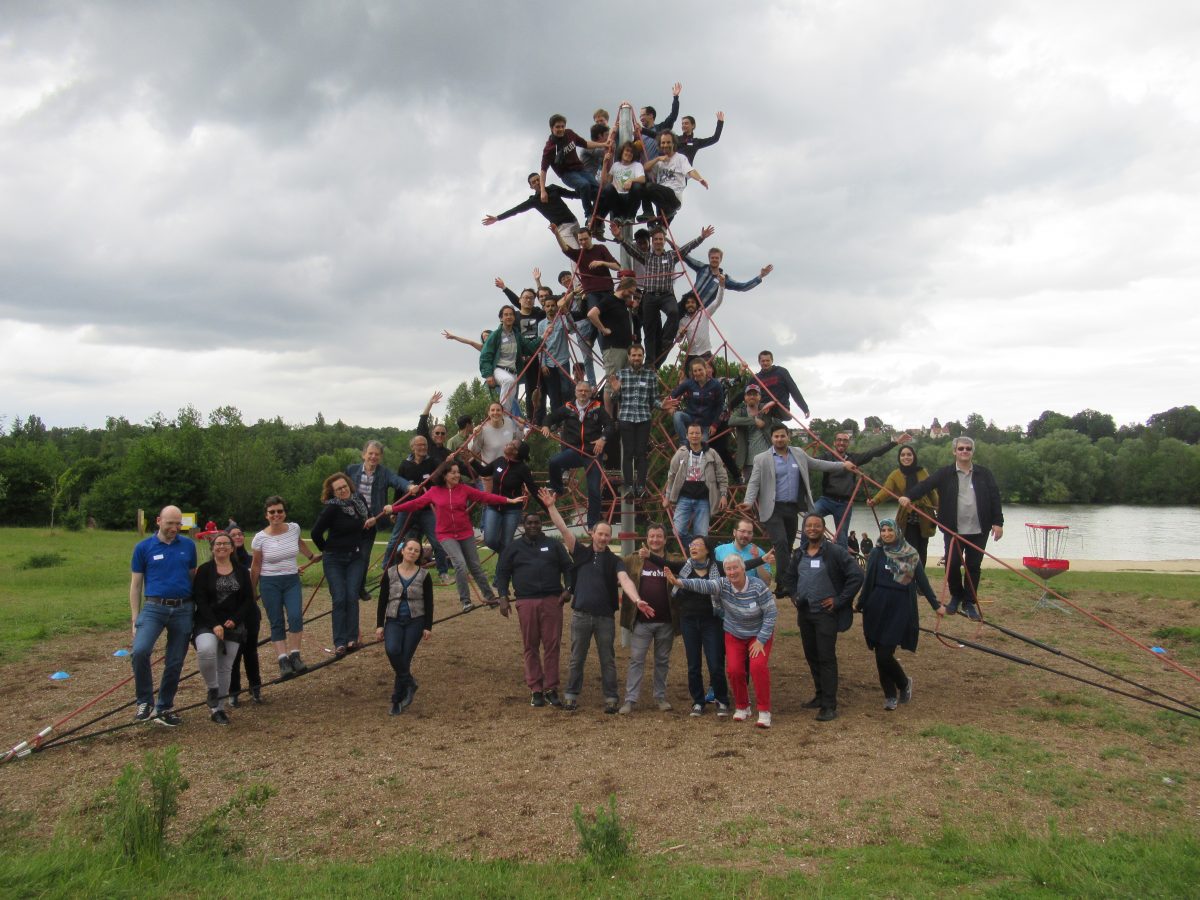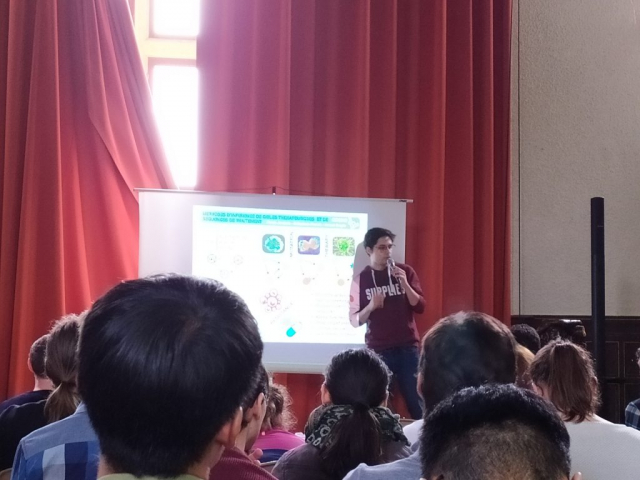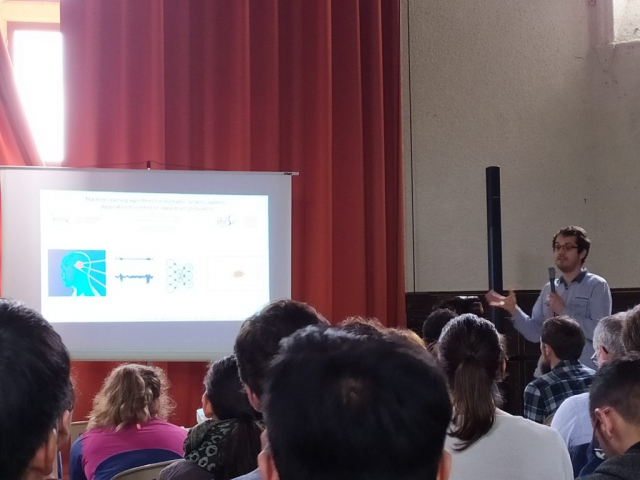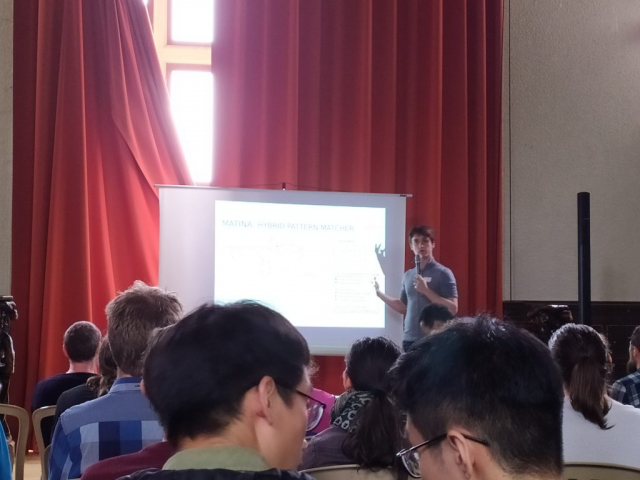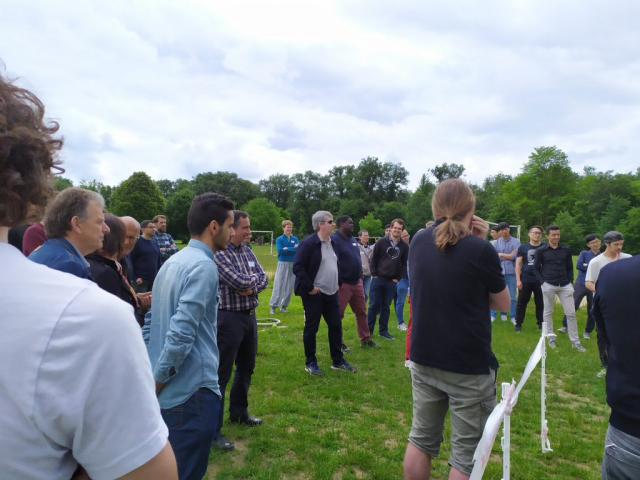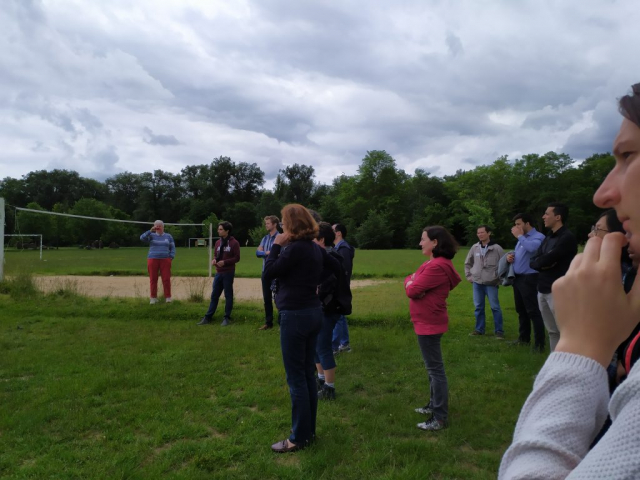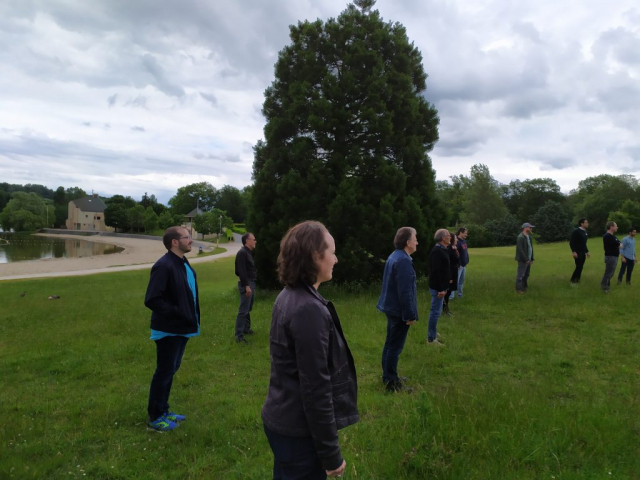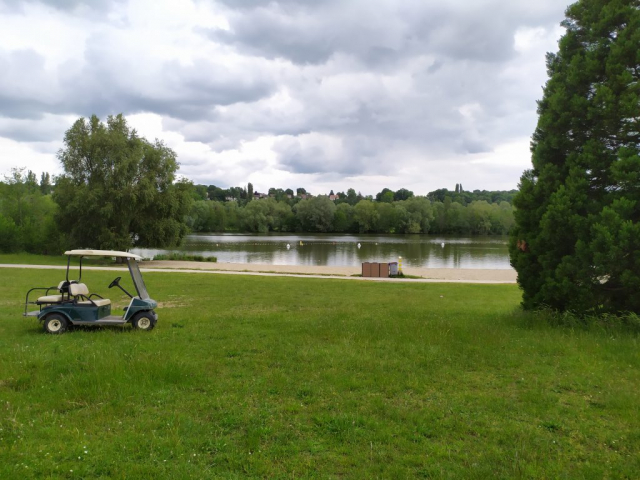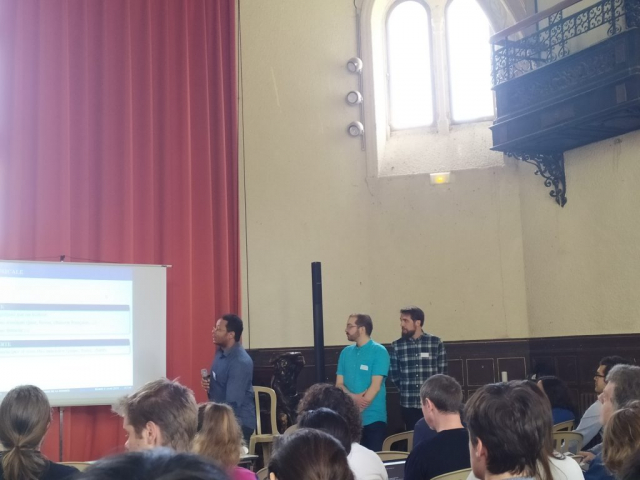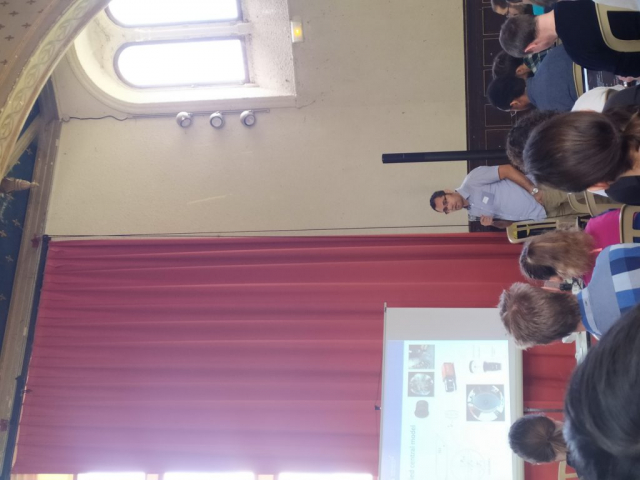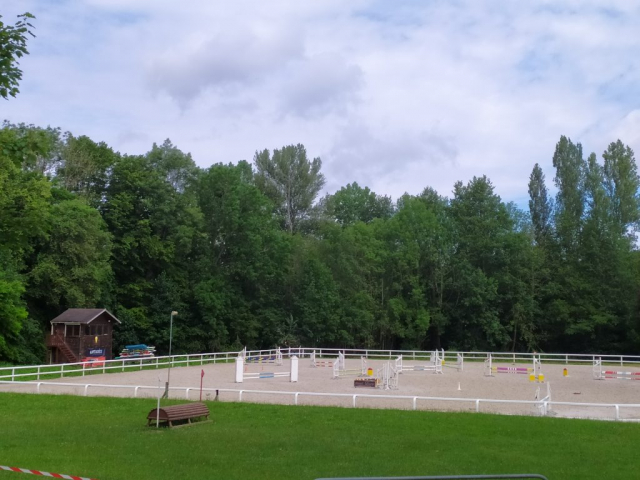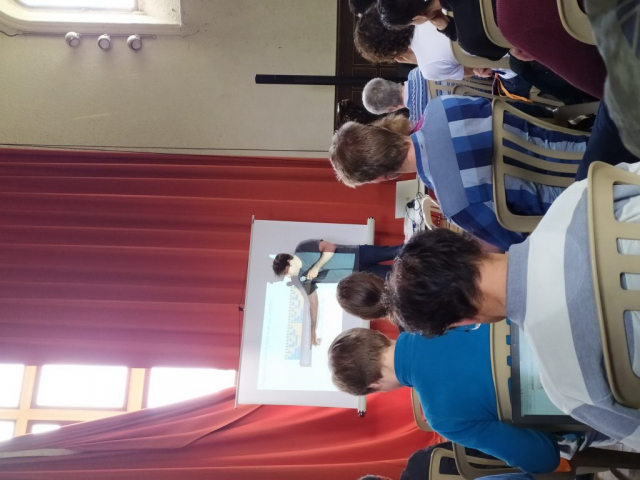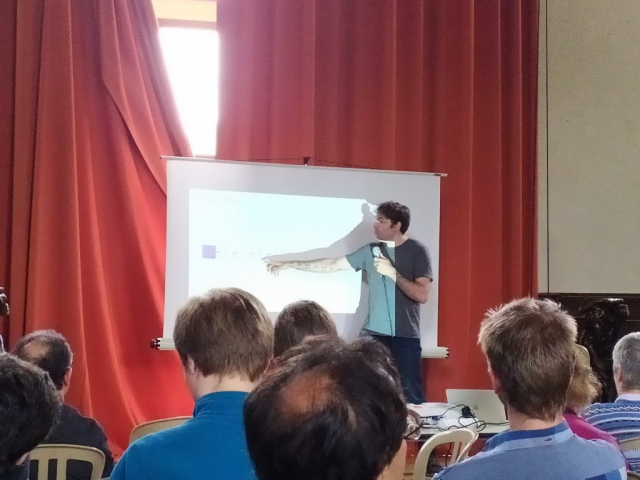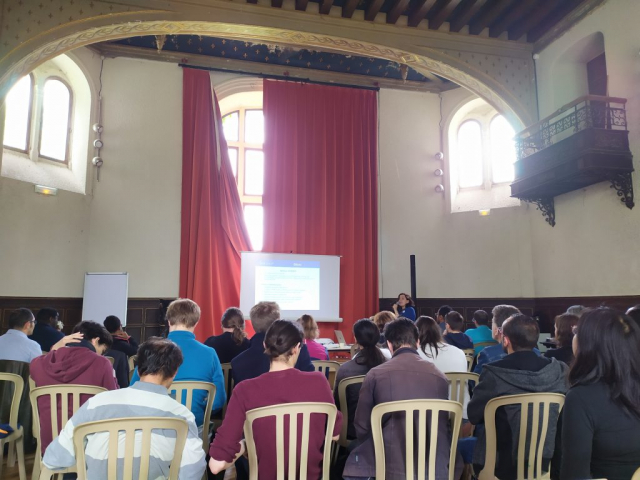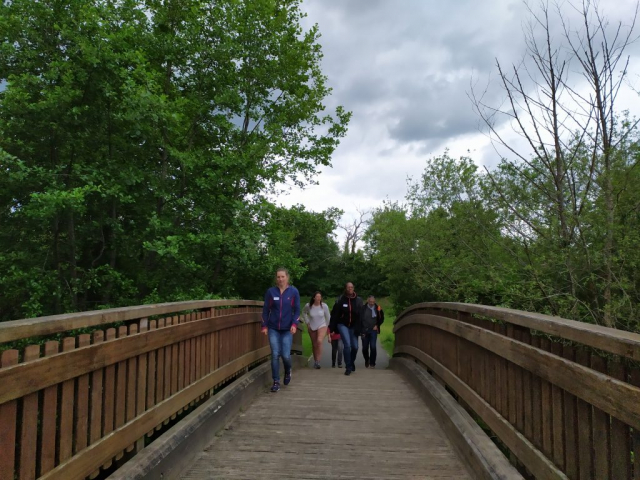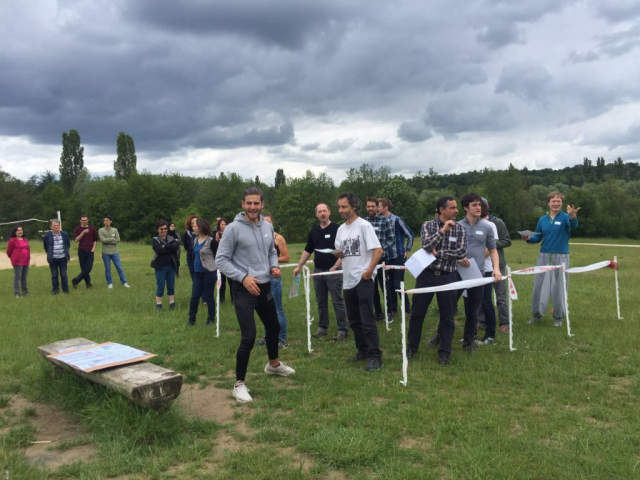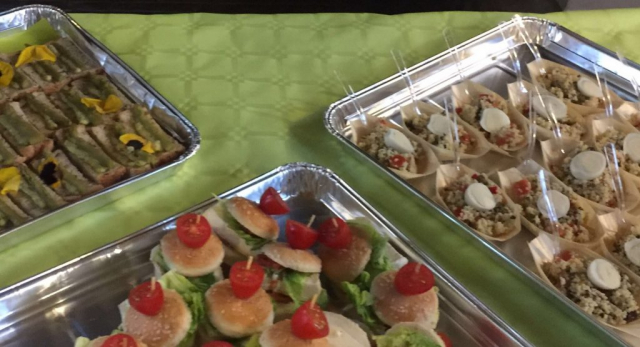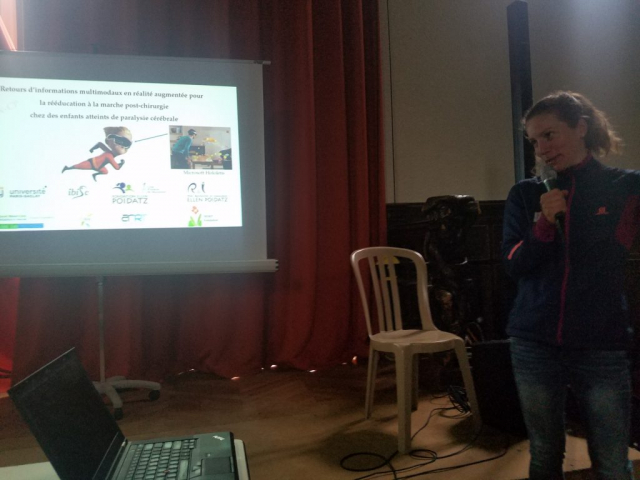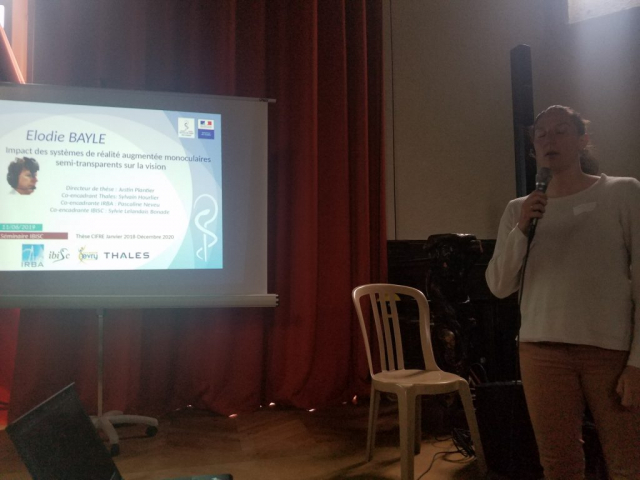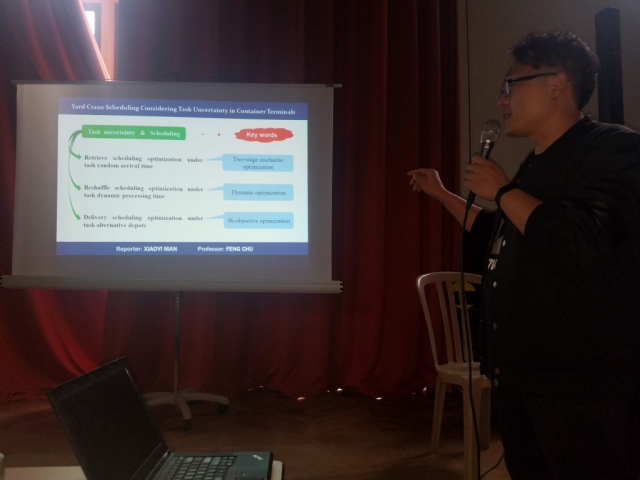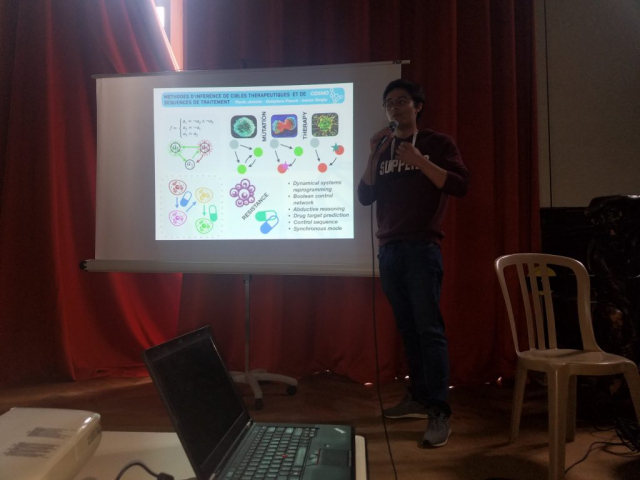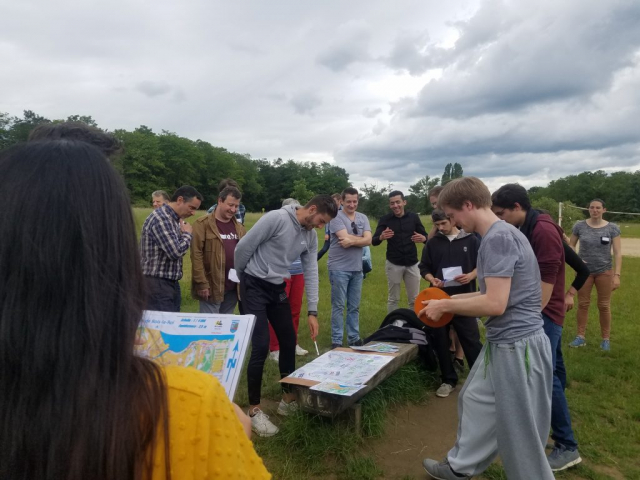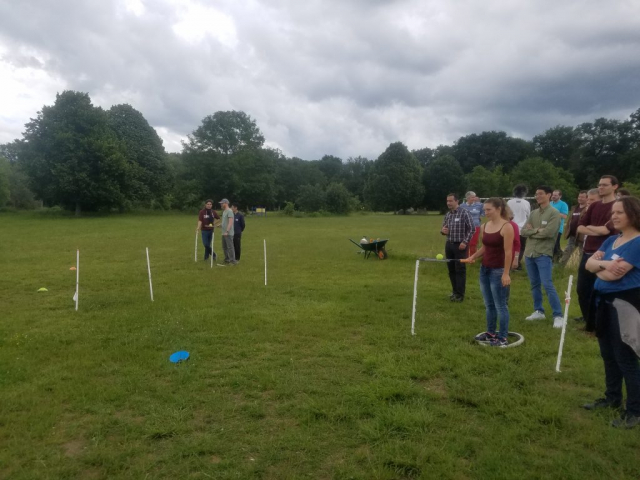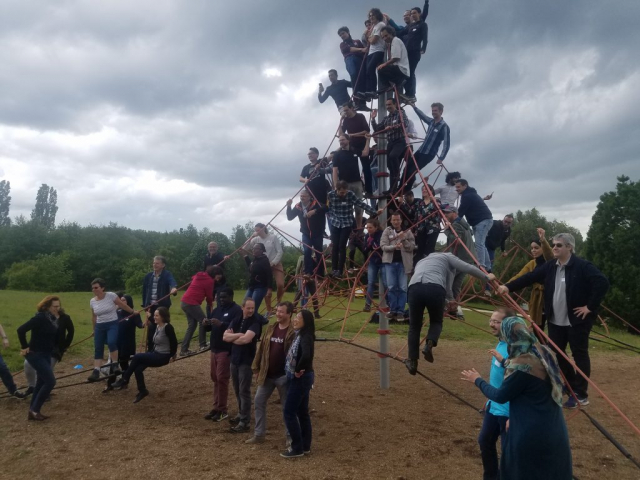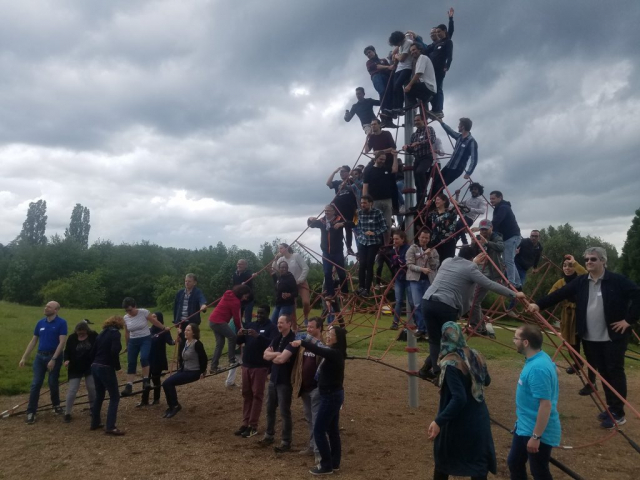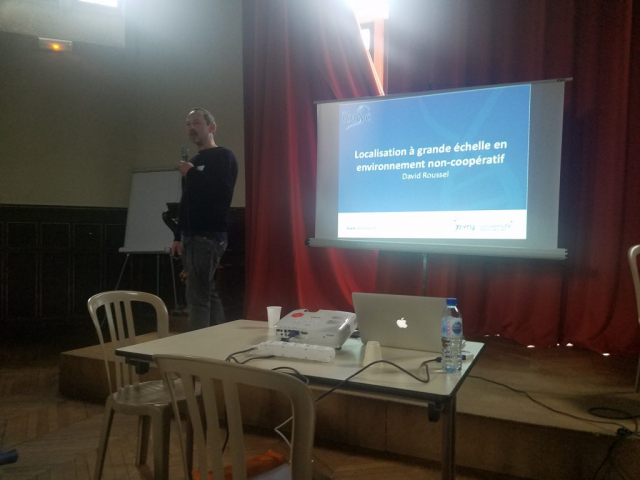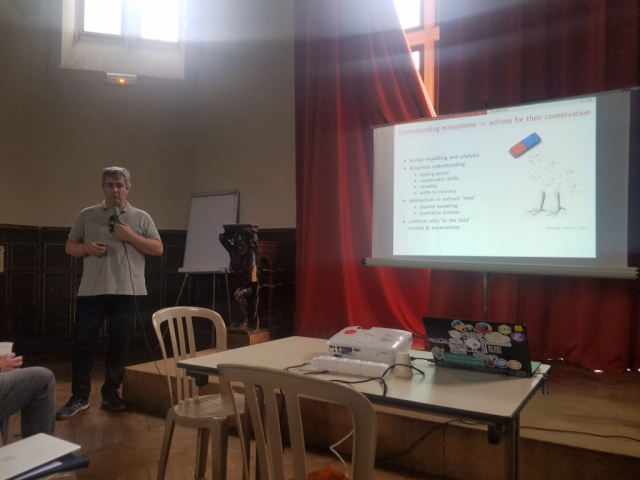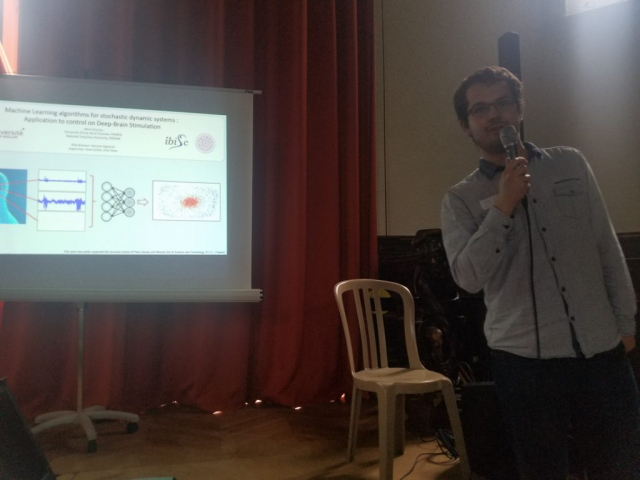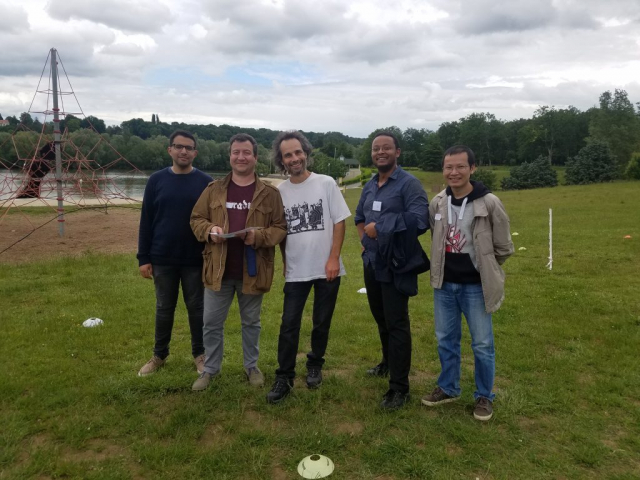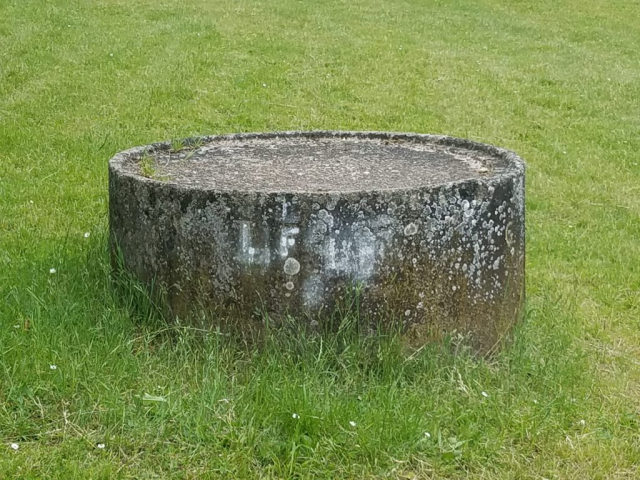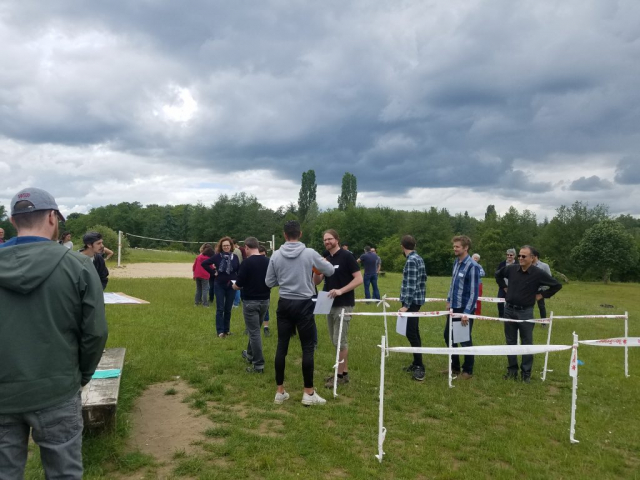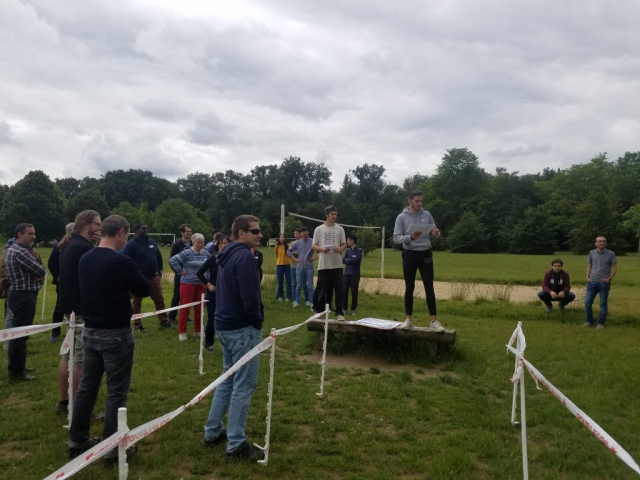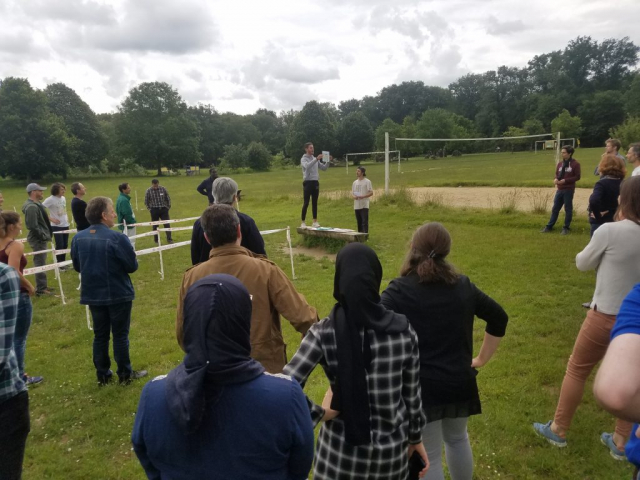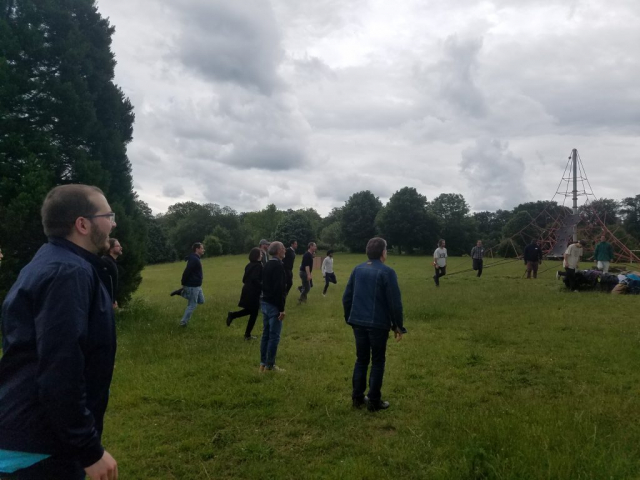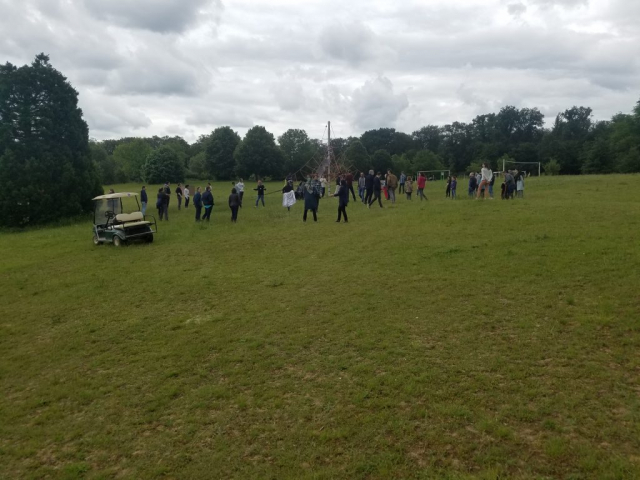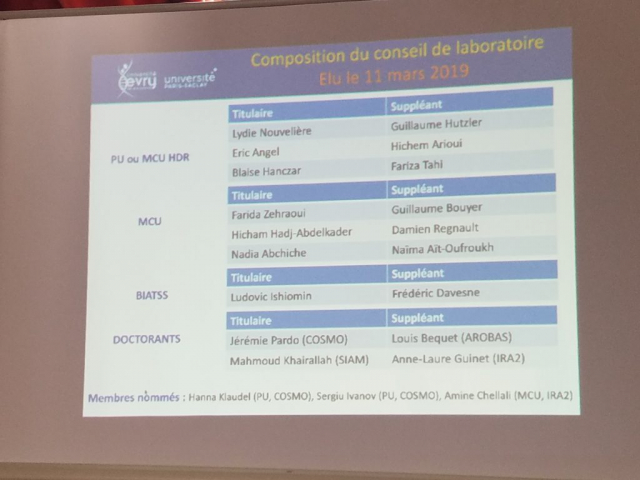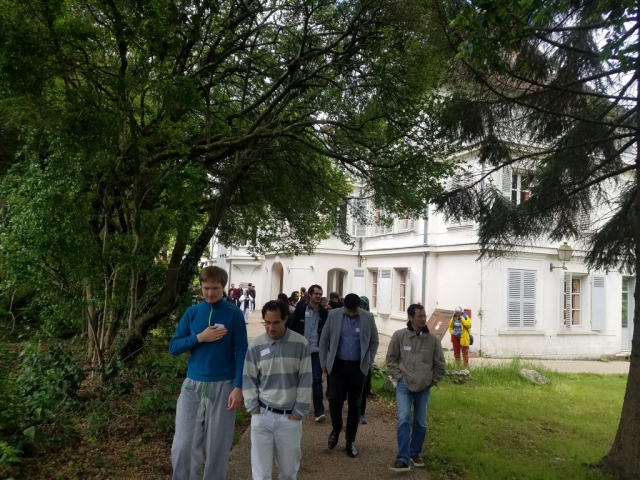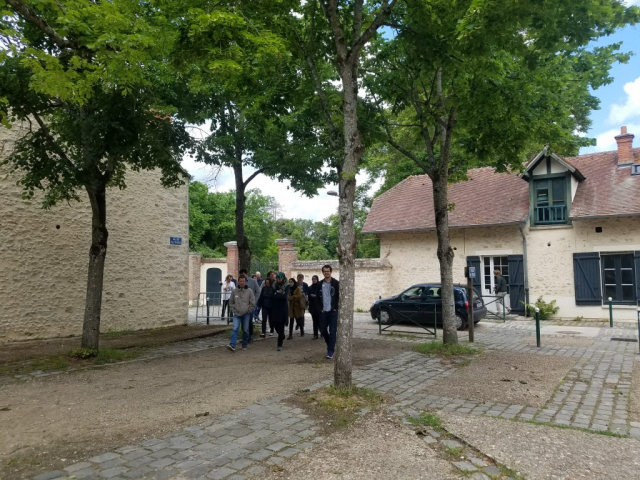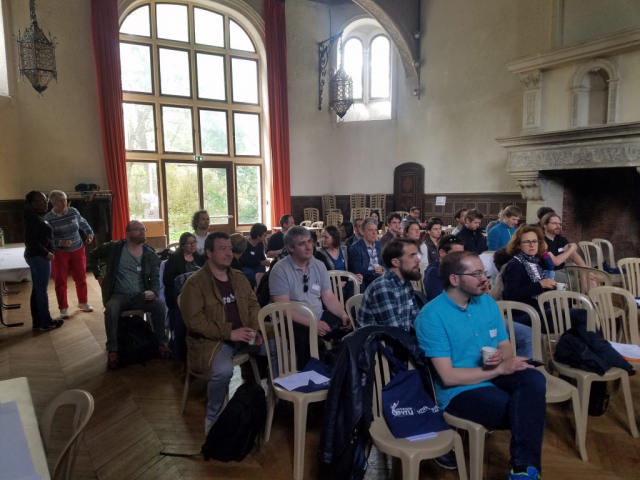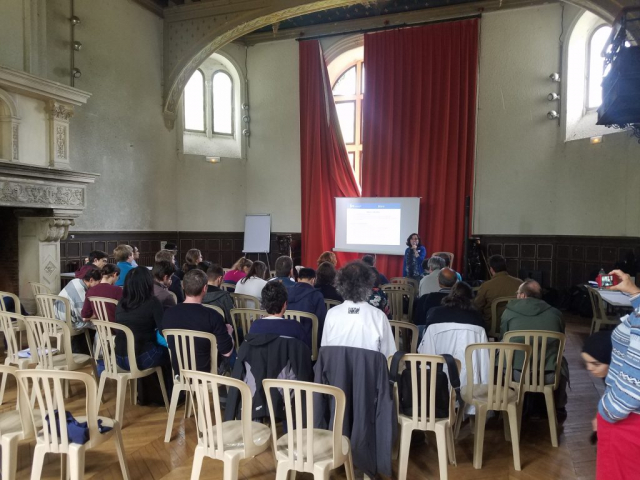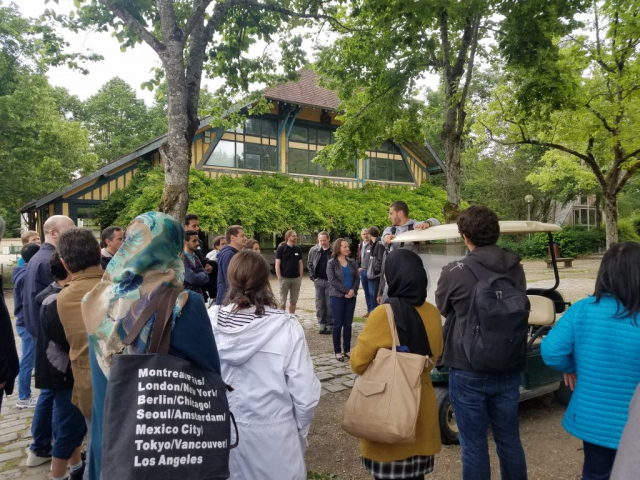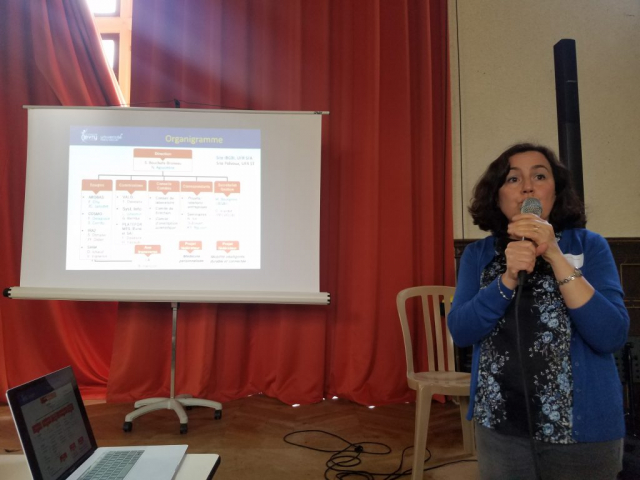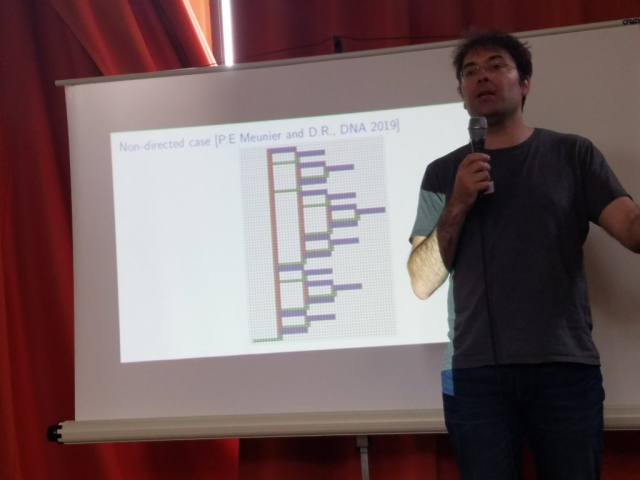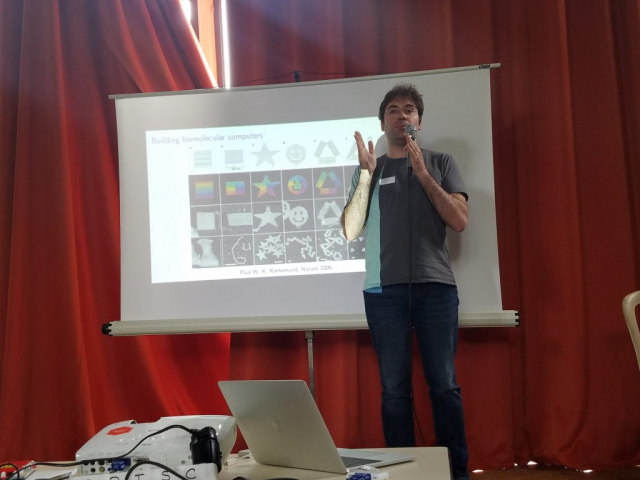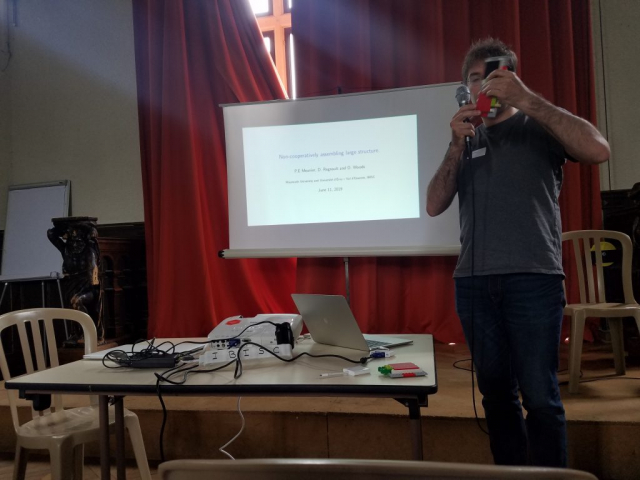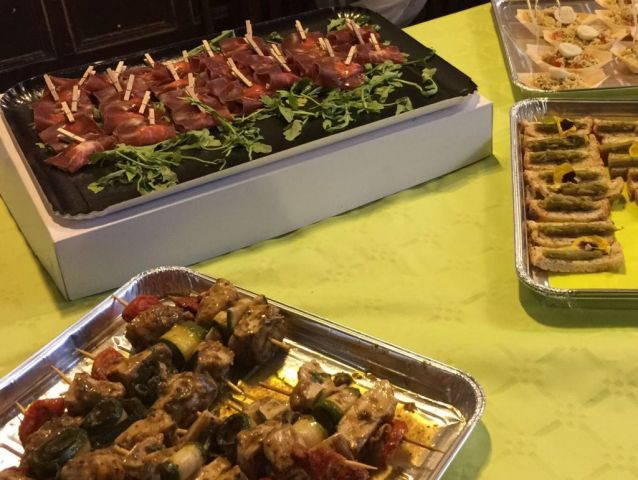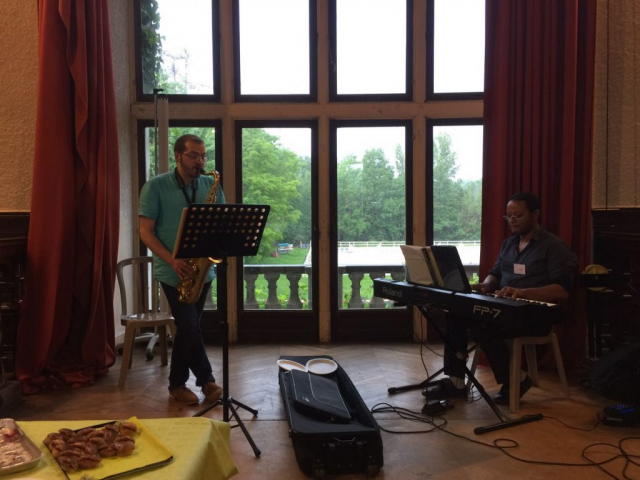La journée du laboratoire IBISC s’est déroulée pour la première fois hors les murs, à la base de loisir de Bois-Le-Roi, le mardi 11 juin 2019.
Le déroulement de la journée s’est effectué selon le programme suivant :
– 08h30 : Départ du bus de l’IBISC, site IBGBI
– 08h45 : Départ de l’IBISC, site Pelvoux
– 09h45 : Arrivée, café d’accueil et mot de bienvenue
– 10h00 — 11h00 : Assemblée Générale du laboratoire
– 11h00 — 12h30 : Ateliers de réflexion
– 12h30 : Repas/Buffet
– 13h30 — 14h00 : Temps libre et café
– 14h00 — 16h00 : Animation en extérieur
– 16h00 — 16h30 : Pause café
– 16h30 — 18h00 : Présentations des permanents
– 18h00 — 18h30 : Teasers des doctorants
– 19h30 — 21h00 : Repas et animation musicale
– 21h00 : Départ en bus (arrêt site Pelvoux puis site IBGBI)
Présentation de l’équipe AROBAS
Auteurs: Pierre-Étienne Meunier (Maynooth University, Irlande), Damien Regnault (MCF Univ. Evry, IBISC, équipe AROBAS)
Titre: Non-cooperatively assembling large structures
Résumé:
Algorithmic self-assembly is the study of the local, distributed, asynchronous algorithms ran by molecules to self-organise, in particular during crystal growth. The general cooperative model, also called « temperature 2 », uses synchronisation to simulate Turing machines, build shapes using the smallest possible amount of tile types, and other algorithmic tasks.
However, in the non-cooperative « temperature 1 » model, the growth process is entirely asynchronous, and mostly relies on geometry. Even though the model looks like a generalisation of finite automata to two dimensions, its 3D generalisation is capable of performing arbitrary (Turing) computation, and of universal simulations, whereby a single 3D non-cooperative tileset can simulate the dynamics of all possible 3D non-cooperative systems, up to a constant scaling factor.
Présentation de l’équipe COSMO
Auteurs: Franck Pommereau (PR Univ. Evry, IBISC, équipe COSMO), Cédric Gaucherel (UMR AMAP, INRA) & William Atger (stagiaire M2)
Titre: Formal Modelling and analysis of ecosystems
Résumé:
To understand ecosystems, one efficient way is to resort to formal modelling and analysis. We focus here on discrete models that result in labelled transition systems (LTS). With such models, ecologists want to understand the main dynamics of the ecosystem and capture the processes that drive its nature or behaviour. To achieve these goals, it is important to be able to present a state space in a way that is readable for the modeller, which amounts to build abstractions of the LTS that remain small enough to be explored by hand. We present a simple modelling formalism, its semantics in terms of Petri nets and LTS, and how the latter can be analysed.
Présentation de l’équipe IRA2
Auteurs: David Roussel (MCF ENSIIE, IBISC, équipe IRA2)
Titre: Localisation à grande échelle en environnement non-coopératif.
Résumé:
Dans le cadre du challenge MALIN (Maîtrise de la Localisation IN-door) nous développons un système de localisation basé vision destiné à être intégré dans un dispositif de localisation multi-capteurs porté par un agent (civil ou militaire). Nos développements utilisent des techniques de SLAM (Simultaneous Localisation And Mapping). Nous verrons donc comment les différentes approches du SLAM visuel peuvent être adaptées aux contraintes du projet, puis nous présenterons les particularités de la solution que nous avons adoptée et enfin comment celle ci s’intègre dans le dispositif matériel porté par l’agent.
Présentation de l’équipe SIAM
Auteurs: Hicham Hadj-Abdelkader (MCF IUT Evry, IBISC, équipe SIAM)
Titre: Closed form solution for Rotation Estimation using Photometric Spherical Moments
Résumé:
Estimating rotational motions can be very useful in different fields including motion estimation and registration in image processing, pattern recognition, localization and control using vision sensors of ground/aerial vehicles, and computer vision. Rotation estimation methods using only images can be classified into two main categories: feature-based and direct (appearance based) approaches. In the feature-based methods, rotations are obtained in general using the camera Epipolar geometry to estimate either the fundamental matrix (essential matrix for calibrated system) or homography matrix between projective planes. The robustness of such approaches strongly depends on the quality of the feature matching between image pairs. Appearance based approaches use pixel intensities of the overall image, instead of geometrical features, and is commonly referred in the literature as dense, direct or global. Methods within this category can avoid the need of some higher level image processing steps such as feature
extraction, matching and tracking.
This work presents new schemes to estimate 3D rotation from spherical images. Unlike existing approaches, spherical moment properties are exploited to obtain a closed form solution without iteratively mimimizing a cost function. The proposed scheme can be used for the different vision sensors obeying the central unified model: conventional, fisheye and catadioptric. It does not need image processing as feature extraction, matching or tracking. Experimental results using both synthetic data and real images in different scenarios are provided to show the efficiency of the proposed method.
- Initiatrice de la journée: Samia BOUCHAFA-BRUNEAU (PR Univ. Evry, IBISC)
- Comité d’organisation: Nazim AGOULMINE (PR Univ. Evry, IBISC), Fabien BONARDI (MCF Univ. Evry, IBISC), Murielle BOURGEOIS (Technicienne Univ. Évry, IBISC), Etienne COLLE (PRE IUT d’Evry, IBISC), Dominique FOURER (MCF Univ. Evry, IBISC), Sylvie LELANDAIS-BONADE (PRE IUT d’Evry, IBISC), Guillaume LOUP (MCF Univ. Evry, IBISC), Olivia VIARDOT (SAENES Univ. Evry, IBISC)
- Base de loisir de Bois-Le-Roi

